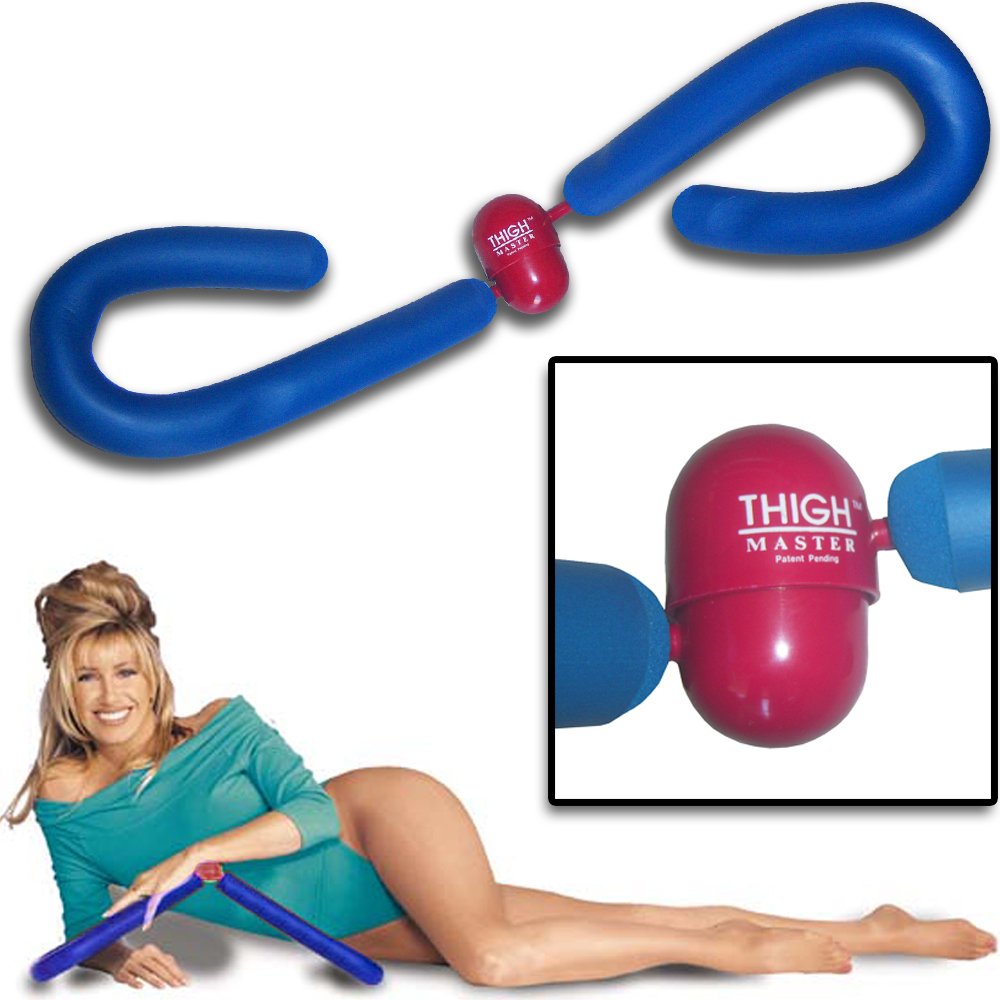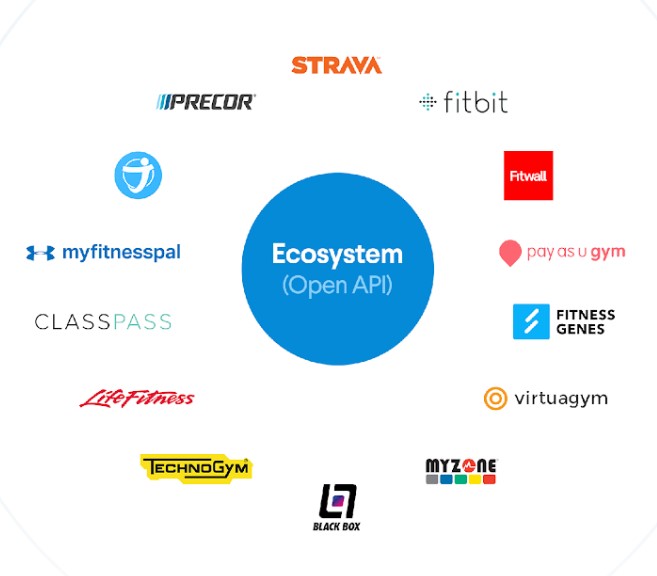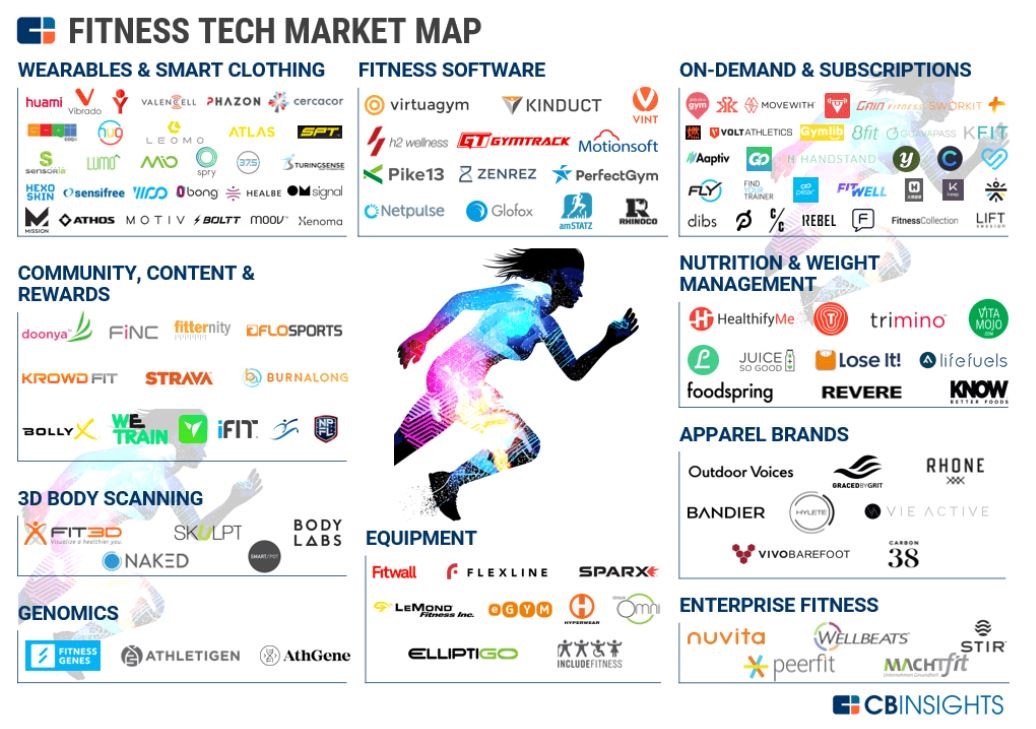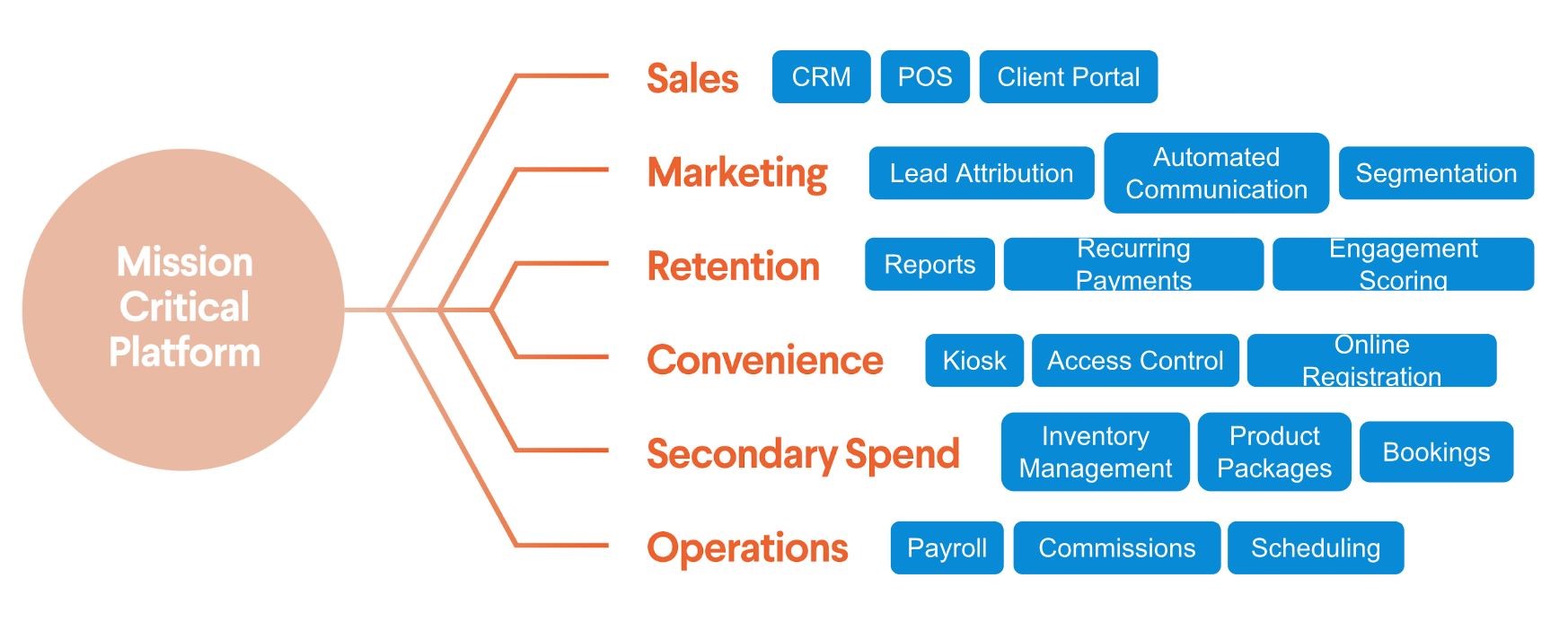Thanks to the rise of digital, the consumer landscape has forever changed. Now people have more data, more options and more awareness about their fitness, the power is firmly in the grasp of the fitness consumer.

Thanks to the rise of digital, the consumer landscape has forever changed. Now people have more data, more options and more awareness about their fitness, the power is firmly in the grasp of the fitness consumer.

‘Survival of the fittest’. A saying which is just as apt in business as it is in nature.
Huge shifts are happening in the world today. Society is now a technologically focused, data-driven and digital-wielding entity. As a result, people are changing their thinking toward fitness and digital devices are affording them more control over how they implement fitness in their own lives.
Some agile businesses and sectors have adapted to consumer needs by digitally transforming. They feed society’s want for convenience and quantifiable results by creating innovative digital solutions of their own.
On the flip side, some businesses haven't yet made the jump to digital transformation.
This could pose a risk to the future of the fitness facility if club owners don’t adapt to the demands of digitally empowered consumers.
Let’s take Kodak as an example.
Back in 1975, industry leader, Kodak invented the first ever digital camera. They even had the patent for it, which means they could have been the first to disrupt the photography industry.
But they chose not to. (Not their best Kodak moment)
Kodak were worried that the introduction of digital would kill off analog photography. For Kodak, the art of photography was much more important than helping their customers. So, in an effort to control the market, they trashed the digital camera they invented.
This allowed other brands to eventually rush in and market the first ‘filmless’ camera for themselves, leading to the growth of photo heavyweights Fuji and Canon.
And of course, consumers loved the convenience and accessibility of the digital camera. It quickly became one of the most sought after commodities, thus steering the photography industry sharply on to the path of digitization.
Kodak, however, decided to go its own way.
Rejecting digital innovation caused the company to freefall from the most popular brand of the century into bankruptcy.
For the fitness industry, consumer-driven wellness is dawning. If the fitness facility -large or small- is to survive in the future, they need to understand the power that fitness consumers hold. And most importantly, they need to adapt to their consumers’ needs by digitally transforming themselves.
Once upon a time, if you wanted to look like a cast member of Baywatch then you needed to pay for it.
Fitness knowledge did not come for free. You could hire personal trainers with expert knowledge, purchase exercise videos and home workout equipment (Thighmaster, anyone?) or you could find exercise plans, classes, and fitness knowledge all-in-one with a gym membership. It was as simple as that.

Fast forward to 2019 and owning a gym membership isn’t a necessary part of keeping fit, healthy, or happy anymore.
Today, 32-year-old accountant, Todd, can start his day with a guided meditation thanks to the Headspace app. Next, he switches on his smart TV and browses youtube’s AI-powered recommendations until he finds a strength workout from his favorite fitness influencer. Then, for cardio, he decides to pack a bag and jog to work. He showers at his office. And before he sits down to work, he gets a ping on his phone to notify him of his steps so far and what food he should eat next to reach his macros.
With powerful technology available, Todd has more control over his wellness. All thanks to the three factors that are reshaping daily life in the digital age: hyper-connectivity, disintermediation, and entanglement.

Internet of things, smartphones, wifi, 4G, Bluetooth, GPS… These are just a few of the phenomenon that has cemented our species as the most connected it has ever been.
Machines, people and the environment can now communicate with each other. Not in the traditional conversational sense (although with AI even that is becoming possible) but in terms of data, everything around us is connected.
Devices can speak to each other all to accommodate and predict human behavior and this is expected to rise: According to Forbes, over 50 billion internet-connected devices will exist worldwide by 2020.
For fitness facilities that means the end of industrial silos. The knowledge that was defined for certain types of companies, stacked in departments or on independent company servers is now being connected. Hyperconnectivity has bought enormous increases in efficiency in the fitness industry.
But this also means knowledge is no longer a commercial concept. Now consumers (at least those with smartphones, laptops and internet) are hyper-connected at all times, which makes them more aware and this motivates them to be better informed about their own human behavior, bodily functions, and health problems.
More data means more insight, and alongside this, the sheer volume and fast flow of digital information means technology can access, analyze and use this information to the benefit of the consumer.
Because consumers are now hyper-connected, they are able to receive answers quicker, which in turn speeds up the rate of curiosity and inquiry in society.
In fitness, for example, wearable fitness tracking technology such as Fitbit, can send real-time fitness stats direct to a smartphone via bluetooth. This information can then be sent anywhere, such as to a doctor or personal trainer. The automatic ping of getting data to where it needs to be means that consumers are becoming increasingly hyper-aware of their own fitness needs.
People hold limitless possibilities to expand their own universe in the palm of their hand; everyone can become an ‘expert’ on fitness. The free flow of data and knowledge available on demand to both consumers and fitness clubs have placed both parties on an even playing field.
Unlike a spider, who spins a complex web and manages not to wrap itself in the process, we have created digital solutions which we have become so entangled with they make up what it means to be human in today’s world.
Our smartphones and computers did not add another dimension to human life, instead, digitization has integrated into all existing dimensions of our lives and inexplicably linked those dimensions together.
As a result, we are increasingly becoming what we make. For example, tools for efficiency make us think and transform how we approach work. Fitness trackers which gather data in the background keep us more focused on our activity level. People depend on technology to learn & improve the same way we depend on our legs to run & walk.
With affordable, powerful hardware like smartphones and the pool of software apps on offer, consumers have the ability to measure any facet of their life, mind, and body all with a few taps.
As a result, people are beginning to define themselves through digital data. They are not asking ‘How fit am I?’ But rather ‘what can the data tell me about how fit I am?’
This switch in thinking has allowed wearable technology to start booming on the fitness market. Tracking devices such as the MyZone heart monitoring belt, have garnered attention among consumers.
The garments are designed to allow frictionless data-gathering of a users performance while they works out. And thanks to hyperconnectivity, the devices can then transmit data such as heart rate, speed, and calories burned to the user’s smartphone.
With this type of technology on offer and the depth of entanglement society is currently experiencing with its digital devices, fitness consumers can, with no effort and a next-to-nothing investment, gain key data about their own behaviors, empowering them to change independent of any 3rd party help.
Generally, disintermediation means to chop the intermediary bridge between business and consumer. For example, rather than the retail chain including linear access between wholesaler, distributor, retailer, customer, due to digital communication, It now looked like this:
With the commonplace use of digital technology, the retail chain has been scrambled, changing the marketplace and shifting the power. Digital communication meant silos of relationships were smashed open. Everyone gained access to the consumer. And this has given consumers more choice and power over whom they to listen to and, ultimately, buy from.
For the fitness industry, disintermediation has eradicated fitness clubs as the ‘middle man’ once needed to help consumers reach their wellness goals.
Automation and hyperconnectivity have simplified a lot of B2C processes which were once timely, frustrating and costly burdens for both business and consumer. For example, the use of client portals within the fitness industry reduces the need for front desk personnel.
Intuitive portals mean that customer convenience demands are being met. But the side effect of this means that customers do not need facility help any longer.
Enabling members to manage their own membership admin, empowers fitness consumers to control their own wellness journey. There is no reason for them to contact industry specialists or customer service reps to solve their problems, they can instead start with Google.
Body scanners are another tech innovation which has heightened the power of the consumer by slicing out the middleman. With advanced 3D scanning, consumers can get a comprehensive break down on the functioning state of their body.
Unlike going to a doctor, taking bloods and tests for this information, body scanners can give immediate, accurate results on levels of visceral fat, bone density and resting metabolic rate.
With inventions like body scanners, people can skip going to the healthcare intermediary in order to better look after themselves.
Intermediaries used to be the gatekeepers of the portals through which consumers accessed their solutions, but with digital communication and online connectivity, the gatekeeper has been fired and the portal thrown wide open, leaving consumer solutions fully within the consumers reach.
Fitness consumers are spoiled for choice in regards to wellness solutions on offer today. And with the exponential digital innovation that is taking place in optimizing wellness, it is essential that fitness facilities cater to the needs of the powerful consumer to prevail.

Wellness used to be a luxury venture, reserved for those with more time and money to spend on tailored health solutions.
However, there has been widespread growth of cheaper fitness solutions, thus widening the fitness market to include other demographics.
As a result, the fitness landscape is becoming inundated with budget solutions designed to meet the fitness and financial needs of the consumer. A study by Active Europe found that 5 out of 10 of Europe’s fastest growing chains are budget clubs.
Now the average fitness consumer, has access to:
The market is diverse, not only focusing on fitness facilities, the rise of workout apps, pay-as-you-gym solutions and even home visit personal trainers have presented the fitness consumer with a selection of quality workout scenarios, many of which they don’t have to commit in long-term to.
The power is now in the consumer's hands to sign-up, try and cancel.
With such a selection on offer, there is something for everyone, though this has lead to a saturation in the industry.
Consumers are creating demand, and with many other trendy digital fitness solutions being invented every other month, they aren’t looking to stick to one solution for long.
Now that fitness if trendy, it has lead to an outpouring of innovation workouts in the sector. Fitness no longer means drab routine circuits, but an exciting and challenging world of possibility.
In a modern world where people only consume content about danger and adventure, races like Tough Mudder and the Warrior Dash feed the niche demand for real-life action experiences.
Obstacle course races are marketed heavily around survival or military concepts, which invites an element of high-stakes danger into the mix.
Some examples of fitness experiences include:
Instead of just training for a race, people are training for an experience, which means challenging mindset and body and offering more adrenaline and value than the safe confines of a gym.
The dominating demographic of fitness (Gen Z’s and Millennials) want more fun and sociability accompanied with their workout. Entrepreneurs have jumped on the ‘adrenaline’ demand and mass marketed via social media to create cult followings. And because of because of the added convenience of digitization, hordes of young people can (and do) sign up easily.
In recent years, despite the availability of budget gyms, there has been a rising surge of people opting to work out at home. Most likely this trend comes as a result of the convenience ranking that drives many consumer decisions today. And in part, could be traced to the allure of privacy and repellant fear of judgment many people experience with gyms.
As a result, the home work out sector has become increasingly advanced at patching up any ‘downsides’ to their solutions.
For example, former brains of Apple, Nest and Fitbit joined together to produce home strength trainer, Tonal.
The machine is boasted to offer a full weight gym and personal trainer in one. With machine learning, Tonal analyzes how the user performs with their strength training. From there the machine will decrease and increase the weight level, offer tips and personalized workout ideas.
Instead of using traditional weight plates, the machine saves on space by using ‘digital weights’; resistance created by electromagnetic forces which are controlled by an algorithm.
Machines like Tonal are disrupting the exercise equipment market. By using interactive workouts and machine learning to personalize workouts, Tonal is positioning itself attractively in the fitness market by directly ticking off consumer fitness demands of privacy, convenience, personalization, interaction and performance metrics.
Other examples of interactive home fitness equipment include:
These types of solutions empower the consumer to socialize and work out all in the familiar environ of their home. While these types of equipment are on the pricier side of things, they only require a one-time investment. And as with all things digital, once demand rolls in and mass production begins, affordability will rise.
Hyperconnectivity paired with digital entanglement has lead to the rise of wearable biometric fitness scanners.
The beauty of wearable tech, is that it places control of the fitness data gathered directly with the user. Accessing their data via a compatible app, the sensor allows the user to analyze and track their own fitness stats, all without relying on any fitness expert.
Smart clothing company, Athos, uses high-end medical tech but is marketed toward athletes. Their training clothes come stitched with micro-EMG sensors that detect which muscles are engaged during workouts, heart rate and breathing. The performance data is then sent in real-time to a smartphone via Bluetooth.
By tracking the key metrics needed, the shirt helps users improve their fitness performance. The Athos app will also provide tips and recommendations based of the stats, offering expert knowledge and in depth personalization.
Some of the most popular wearable fitness technology:
It’s a convenient and seamless tracking experience for the consumer. As the tech is built for 24-hour use, users don’t need to concern themselves with the hassle of repeatedly switching the sensor on and off.
The accuracy and immediate personalized data these wearables offer are a big selling point for millennials looking to progress quickly with improving their fitness.
Although the tech can be expensive, according to Gartner Inc, the end-user wearable market will be worth an estimated $42 billion with a 25.8% YoY growth since 2018.
The fitness industry needs to start facilitating the digital experiences of their consumers.
Doing that means transforming their business in a way that will submerge them in the digital world. That is where the consumer is.
And to achieve that, it’s important for facilities to use club management software which can help facilities manage, organize and measure their gym’s performance.
By moving their services online members have the opportunity to become hyper-connected with the fitness facility, and this will allow clubs to disintermediate their admin processes, so consumers can take control of their wellness, as they should rightly do.
This way the facility can become a part of the consumer’s digital ecosystem.

So where should gyms start?
The 3 side effects of digitization (hyperconnectivity, entanglement and disintermediation) have ripped apart industry silos. Now disciplines feed into one another. Sectors bleed together all to create more holistic offers for consumers.
For fitness consumers, this means working out now fits into the wider, more vague quest for wellness.
Facilities should accommodate this quest, instead of pushing members to work out on their terms, health clubs should be entering the consumer's world.
Pragmatically, this means using a club management platform with an open API. In other words, the management software of a club must be able to integrate with the 3rd party software and apps fitness consumers are already entangled with.

By not shying away from digital solutions, fitness clubs can allow their consumers to still explore their fitness on their own terms, and at the same time offer them more data, better results and personalized workouts to have a happier fitness experience, which at the end of the day, is what fitness facilities should aim to achieve.
To thrive, gyms need to start widening their horizons.
Partnering with other related communities and industries will give fitness clubs greater exposure to new demographics & offer greater value to them.
Fitness facilities are not just about giving consumers access to workout gear anymore. Fitness brands should be positioning themselves as the ‘mentors’ or ‘experts’ who will be there for the consumer inside and outside the gym.
For example, fitness experiences such as the Warrior Dash, offer high adrenaline, fun and intense races. By becoming involved in these types of road races, either by sponsoring the event or helping out operationally, fitness brands can get exposure to new demographics.
Also, by entering the ‘fitness experience’ industry, clubs can help their members train for the events too.
Creating network connections like this gives the opportunity or fitness facilities to work with other fitness experts to collaborate and create something really big and exciting for consumers.
![]()
Other ideas for community partnerships:
Consumers have power, so it’s time to really start listening to their demands. In order to decode the wishes of customers and create relevant offers, fitness clubs need to prepare for a data-driven future. The fitness providers who can deliver the consumer’s idea of happiness will keep them on their side.
Collecting and using consumer feedback is a powerful way to get a clearer idea of the direction the consumer is following on their wellness journey.
Personalization is key for success in the future of fitness. With all the data available to gyms, club owners can collect it and deliver highly tailored workouts. Everyone is different, showing members you know and understand their unique fitness needs can make a fitness club more valuable than any other app or facility.
If fitness brands start working as part of the digital landscape it will put them in closer reach to the consumer. At the same time, the speed of innovation happening in the digital fitness market is recurrently disrupting the industry.
There are 2 ways to make this work for health clubs.
First, attending big industry events and exhibitions will allow club managers to take stock of the products and offers which may be the ‘next-big-thing’ in fitness.
Co-sponsoring events, hosting panels and attending trade shows give valuable opportunities for fitness brands to network and understand the latest technological advances.
Clubs can then prepare themselves strategically for future shifts in the fitness market. Large fitness tradeshows include:
Second, plugging into a powerful central management system is necessary for fitness clubs to organize, quantify and report on facility performance, gaps and how to improve. Brands might find a technological advancement their members could benefit from, but without an advanced CMS in place first, implementing new strategies into a facility could lead to calamity and unsatisfied members.
The best Club Management Softwares will offer cloud-based backups, open API (for integrations) and give you all the tools needed to run a gym smoothly, such as, point of sale systems, automation center, client portal set up and a mobile app for members.

As a brick and mortar business, fitness facilities may think themselves exempt from the power of digitization.
But with other advanced fitness solutions vying for center stage on the wellness market, competition will get fierce. Fitness facilities need to even the playing field. They need to think digital, accept that the consumer does indeed reign and play by their rules.
Consumers enjoy being empowered. And hyperaware, hyperconnected people are looking for brands who will accommodate their demands of convenience, diversity and personalization.
The fitness facility should work in the best interest of their consumers to deliver the fitness experiences which people need to make fitness easier to form as a habit.
Schedule a meeting with a free demo presentation to explore Perfect Gym software!